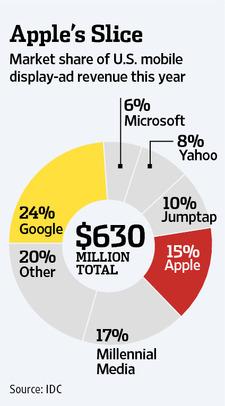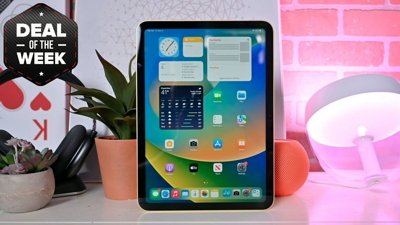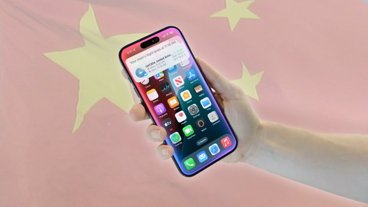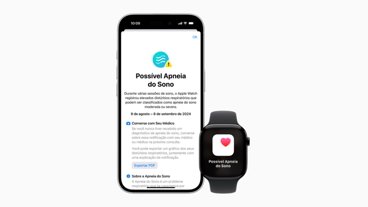A new report by IDC highlights that apps such as Facebook, Twitter and Pandora are beating mobile ad networks in grabbing new ad revenue, a trend the research group failed to predict in its last report. Ad revenues are still a tiny fragment of overall mobile revenues however.
IDC noted in a new $1,995 report from its prediction team that revenue from ad networks took a back seat to ad revenue from "mobile publishers" such as Facebook, Pandora and Twitter, which handle their own advertising.
The shift occurred rapidly, the firm stated, with independent app publishers' ad revenue share jumping from 39 percent in 2011 to a majority 52 percent split in 2012.
The entire pie for mobile ad dollars more than doubled in one year, growing from $630 million in 2011 to $1.7 billion in 2012. In contrast, the revenue collected by the top four ad networks (Google, Millennial Media, Apple's iAd and Jumptap) only grew by 47 percent. Ad networks push display ads into participating developer's apps, much the same way that display ads are delivered on the web.
"Mobile ad networks are losing market share to publishers, and we expect them to lose even more going forward," said Karsten Weide, IDC's Vice President of Media & Entertainment.
IDC failed to predict the shift last year as it bashed iAd
One year ago, Weide seemed primarily focused on denigrating Apple's iAd, telling the Wall Street Journal that "Apple we believe will, over time, fade into the background," in the market for mobile ads, apparently because Apple's iAd program only advertised to iOS devices.
IDC's Weide didn't point out that, rather than "fading into the background," Apple's iAd jumped from $95 million to $125 million over the previous year, an increase of over 30 percent. Instead, it reported that Millennial Media had "taken over Apple to claim the number 2 spot."
However, IDC already reported last year that Millennial Media had a larger share of the mobile ad market than Apple (prominently depicted in a graphic based on IDC's, shown below). This year, in fact, the influx of new ad revenue from independent app publishers made Millennial Media's market share advantage over Apple's iAd less significant, rather than greater.

On top of that, Apple's iAd didn't set out to gain market share in mobile ads. Instead, it was designed to give Apple's iOS developers an option for presenting less obtrusive ads in order to fund their work. It's debatable whether iAd is any more effective at monetizing apps than other ad networks, but it simply isn't controversial that iAd only works on iOS by design.
Without any iAd support for Android, where most apps rely exclusively on advertising for their funding, it's actually more surprising that Apple's internal ad network has kept growing alongside other mobile ad networks that target all mobile platforms, and actually kept itself ahead of three of the top five who do.
The failure of Google's search-based advertising in mobile
What IDC's figures really highlight, however, is that in the mobile world successful companies are finding their own advertising. This is a marked change from the web, where old media has struggled to monetize itself and Google took the lead in harvesting ad revenue from users of its services, primarily through paid placement ads presented in search results.
The fact that the web and mobile markets are vastly different was highlighted by Apple's Steve Jobs when he introduced iAd in 2010 as a solution to the problem that "mobile advertising really sucks."
Jobs didn't say iAd would earn lots of money; he said it would improve users' experience and help developers fund the development of new apps. At the release of iAd, Jobs said Apple's App Store had 185,000 apps. Today, the iOS platform has more than 775,000.
"When you look at a mobile phone, it’s not like the desktop," Jobs said. "On the desktop, search is where it’s at. That’s where the money is. But on a mobile device search hasn’t happened. Search is not where it’s at! People aren’t searching on a mobile device like they are on a desktop.
"What’s happening is that they’re spending all their time in apps. When people are looking for a place they want to go out to dinner they’re not searching. They’re going into Yelp. They’re using apps to get the data on the internet rather than a generalized search. And this is where the opportunity to deliver advertising is. Not as part of search but as part of apps."
Apple earns three quarters of mobile software revenues and mobile hardware profits
The fact that mobile software revenues are coming from apps rather than search has worked out really well for Apple, which had focused on creating the best market for mobile apps rather than seeking to control the market for ad related revenue. Google's core competency of search result paid placement ads simply hasn't translated to mobile.
Apple reinvests most of its iTunes and its App Store profits back into those businesses, rather than using them as cash cows. However, the company still captured 74 percent of app revenue in the most recent quarter, despite "only" servicing iOS users and running its app business at break even.
More importantly, Apple makes the majority of its revenues from hardware. The iPhone accounted for around $30 billion of Apple's revenue last year, more than 120 times larger than Google's mobile display ad business (or Facebook's) and more than 240 times more important to the company than its iAd program.
In vocally predicting just a year ago that iAd would "fade in into the background," IDC failed to identify the real trend it stumbled upon this year: that mobile ad networks in general would see their share of mobile ad revenues essentially cut in half across the board by apps that get ad dollars on their own, even as growth in the overall market for mobile display ads has slowed.
The much talked about market for mobile ads is actually a tiny sliver compared to revenues and profitability on the hardware side, where Apple also owns around 73 percent of the entire industry's profits.
 Daniel Eran Dilger
Daniel Eran Dilger







-m.jpg)






 Malcolm Owen
Malcolm Owen
 Andrew Orr
Andrew Orr
 William Gallagher
William Gallagher
 Sponsored Content
Sponsored Content
 Christine McKee
Christine McKee

 Thomas Sibilly
Thomas Sibilly








12 Comments
Stevo was right, again! :)
I really miss that guy.
He could explain what was good and bad in tech in one sentence....
"Don't hold it like that!"
"Flash is crash prone!"
"Sometimes easy is better than free!"
"Fragmentation."
etc., etc.
This may seem naive, but I always felt he was looking out for me/us. Trying to provide the best user experience and best products he could. For profit, no doubt. But, I always had the impression, to Steve, it was more about being the best than profits. :)
Stevo was right, again! :)
This may seem naive, but I always felt he was looking out for me/us.
I don't think you're naive. I think you're hitting the nail on the head!!!
[quote name="AppleInsider" url="/t/156887/apps-beating-web-style-ad-networks-for-mobile-advertising-dollars#post_2307613"]A new report by IDC highlights that apps such as Facebook, Twitter and Pandora are beating mobile ad networks in grabbing new ad revenue, a trend the research group failed to predict in its last report. .[/quote] No kidding. A research group that doesn't have any grasp on the real world. Who'd have thought? /s
It does seem like the second time around, he realised that in order to continue to make the best products In the world, Apple had to be profitable to fund it! Personally, I'm all for that. They always earn every penny of their asking price; their sheer ingenuity brings them higher profits than the competition. It seems like Google is really in trouble here, as this is their major profit from their investment in Android, especially as we see "forks" in the road ahead! I was no fan of Google Reader, but this is where their expertise lay. If they could have monetized feeds, they could have migrated search users into a News/Tumblr/Facebook/Pintrest/Twitter amalgam that could have cemented their hold on the web. Maybe Google+ will do that, but it doesn't seem much more than a stand-alone social network (and how have they taken advantage of YouTube? I know people that don't know it's even owned by Goog, that can't be good...)
This is why Google is soooo screwed.